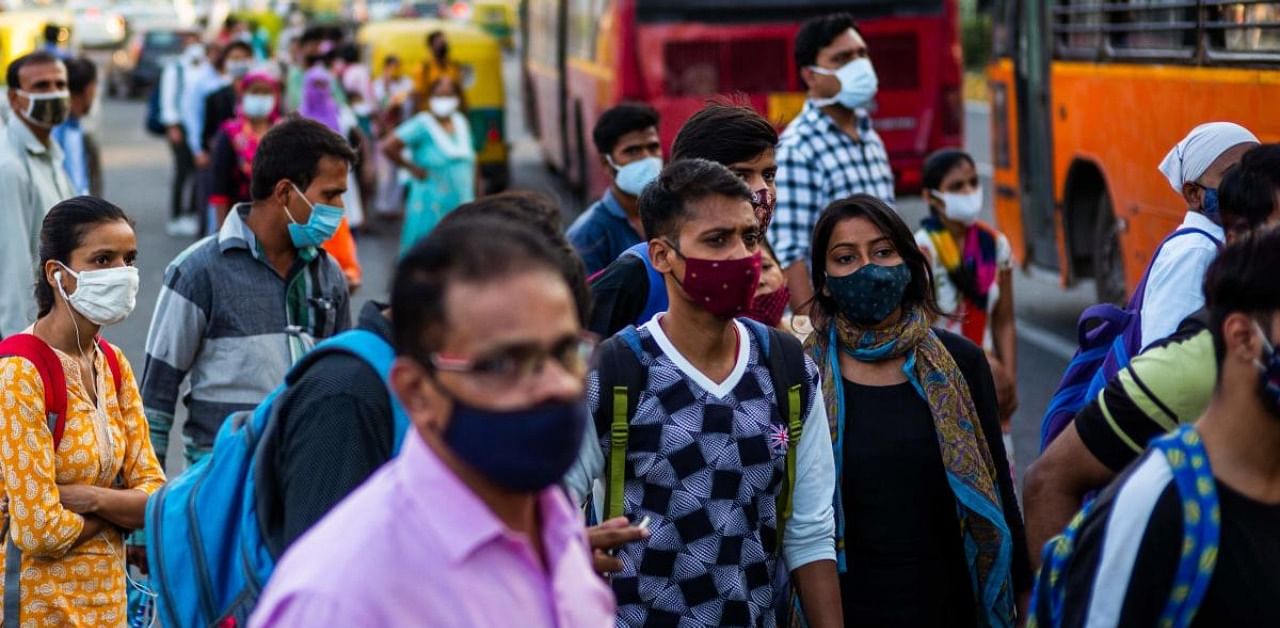
The National Centre for Disease Control (NCDC) in its revised strategy for Covid-19 control in Delhi has recommended rationalising contact tracing in the wake of workplaces emerging as hotspots of the virus spread in the city.
The strategy has been revised under the guidance of the Centre's expert group chaired by the NITI Aayog member V K Paul.
With the gradual opening up of offices and economic activities, the workplaces are becoming hotspots of infection that is reaching from workplaces to the families, stated the revised strategy drafted by the NCDC.
"Hence, in view of the widespread spread of infection of COVID-19, contact tracing strategy need to more rationalised," it said.
The contact tracing activities in Delhi has been very limited since the beginning. The number of contacts traced per positive cases on an average remained only up to seven to 10 per contact, said a report on the revised strategy for Covid-19 control in Delhi.
The report also recommended that the guidelines for selection of cases to be put under home isolation need to be strictly followed and all symptomatic positive cases reported from densely populated areas should be isolated only in Covid Care Centres to ensure optimal utilisation of these facilities.
Contact tracing could be restricted to ''forwards contact tracing'' only for immediate family contacts, neighbourhood contacts and close workplace contacts should be traced and tested as per ICMR guidelines on a priority basis, it stated.
"The criteria of testing of asymptomatic high-risk contacts between 5 to 10 days since the last exposure should be followed rigorously. Identification of workplace clusters for saturation testing after risk assessment should be undertaken on priority by all districts," stated the report.
All workplace contacts in offices or workplaces being run in the closed settings should be enlisted and districts should keep a database of positive cases reported from workplaces, it recommended.
The report stated that the proportion of cases in the containment zones in various districts has ranged from 15-20 per cent (80 per cent of the cases are being reported from areas outside containment zones).
The proportion of active cases in the various facilities and home isolation is observed to the extent of 30 per cent and 50-55 per cent respectively, it added.
"It is worth noticing that very few cases are reported from the containment zones which were formed in the beginning of the pandemic in April and May. This indicates the containment strategy adopted in the beginning (large zones) and measures inside the containment zones have been fairly successful in limiting the number of cases," the report said.
After progressive unlocking and as economic activities have resumed, the community perception for Covid-19 has changed and hence the administration is encountering a lot of resistance for establishing and implementation of the recommended strategy for containment zones, particularly the perimeter control, it added.
For administrative feasibility, the Delhi government has adopted the micro contaminant strategy and it is observed that the overall size of the containment zones has significantly reduced and now restricted to cover only a few houses in and around the reported positive case.
At many places, micro containment zones were limited to 2-3 houses only and in some instances, even single houses are listed as containment zones and practically there is no difference in cases labelled as home isolation or containment zone, noted the report.
It said COVID-19 cases are being reported from all areas of all the districts in Delhi and hence existing containment zone strategy needed to be revised.
The report recommended revamping the containment zone strategy.
"With progressive unlock and resumption of economic activities, cases are bound to increase in all districts.
"The periodic sero-surveys also indicated the prevalence of infection has reached beyond 30 per cent. In the present scenario, the containment strategy needs to be revamped."
The formation of new containment zones could be restricted only for highly dense localities such as resettlement colonies and JJ clusters and slum areas, the report stated.
Containment zones in these highly dense areas, entire affected area and mohallas should be contained, it added. A containment zone should be formed in areas where clustering of cases occurs - at least three cases from three different houses or as per epidemiological analysis by local authorities.
For planned colonies, big apartments, RWA-governed localities, the strategy of micro containment zones or home isolation may be continued, the report said.
It recommended the enlisting of high-risk groups (elderly, co-morbid, pregnant women) for intensified focus and follow-up in containment zones and potential hotspot areas for an active house to house surveillance.
"Initial active house to house search to detect all suspected cases should be completed in three days (and 100 per cent first time testing to be by rapid antigen tests only) with a focus on the high-risk population.
"After initial 100 per cent house to house search, active searches should be undertaken every 3rd to 5th day to cover all houses in containment zones and all those detected as symptomatic should be re-tested only by RT-PCR," the report stated said.